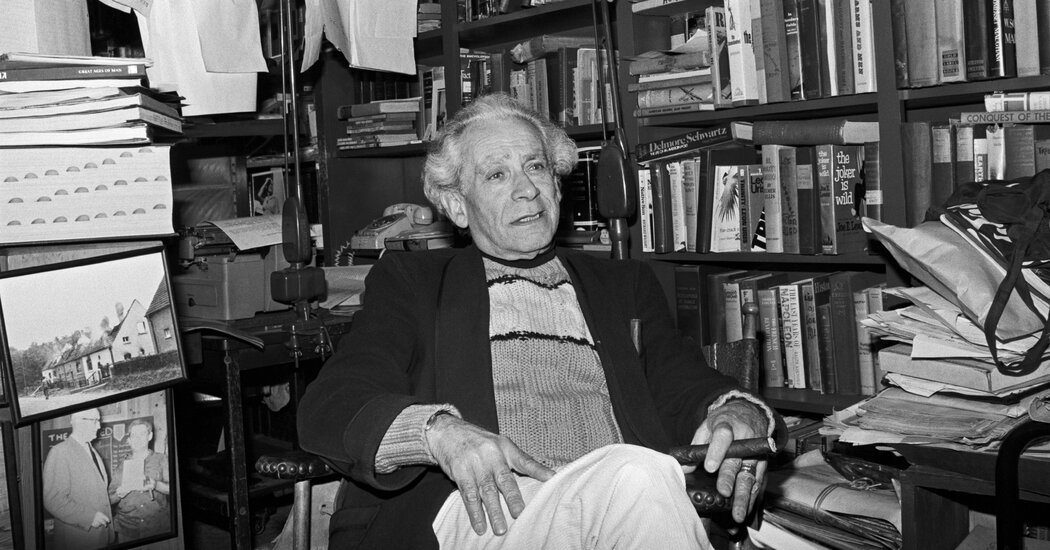Dear readers,
All children are secretly small ghouls, or at least I was — an acquisitive little bookworm who rooted relentlessly through library stacks for the titillating and age-inappropriate, the shifty and strange. Andrew Lang’s gleefully medieval “Fairy Books,” with their warlocks, curses and capricious moral punishments, promised classic fables stripped of their dull Disney sweetness; Time-Life’s “Mysteries of the Unknown” series painted a dark netherworld of séances and spooky pyramids untroubled by facts or science.
Let us also praise the grownup enablers: When a friend’s mom caught me sneaking off like a rec-room cat burglar with her battered copy of Kenneth Anger’s legendary scandal bible “Hollywood Babylon” for approximately the 12th time, she laughed and told me to just take it home. Oh, the glorious calamity of dead starlets and defenestrations, mercury poisonings and cocaine orgies! Fatty Arbuckle did what with a soda bottle? Tell me more. (Numerous anecdotes in Anger’s book were embellishments or outright lies, but many hardened into myth — and at least a few made their way into Damien Chazelle’s frantically scatological show-business valentine “Babylon” last year, starring Brad Pitt, Margot Robbie and an incontinent elephant.)
Eventually, a small ghoul graduates. Seduced by the gothic stagecraft of “Wuthering Heights” in junior high, I learned to love “real” literature and (mostly) leave cheaper thrills behind. But adult me still finds herself very much pleased by these titles’ lust for life in all its forms.
—Leah
Fuller wrote, directed or appeared in some 50 movies, from blowsy neo-noirs (“The Naked Kiss”) to bare-knuckled westerns (“Forty Guns,” “Run of the Arrow”), though you may not recognize his name unless you’re a dedicated fan of midcentury genre pictures, or perhaps a Frenchman (like Jerry Lewis, he’s something of a folk hero in France).
If even his best-known works — “Shock Corridor,” “Pickup on South Street,” “The Big Red One” — rarely transcended B-movie status, this rich, rollicking memoir, published several years after his death at 85 in 1997, still feels imperative in its own way: less like standard biography than a highly personalized survey of 20th-century history. In alternately earnest and pugnacious prose, the Worcester, Mass., native recalls his zagging, Zelig-like journey from eager copy boy at several New York City dailies to infantryman on the frontline battlefields of World War II, and on through the equally booby-trapped trenches of Hollywood.
A select and wildly disparate list of luminaries you will memorably encounter here: William Randolph Hearst, Marlene Dietrich, Fritz Lang, Jim Morrison, Marilyn Monroe, Alfred Hitchcock, Elie Wiesel, Nat King Cole, Yohji Yamamoto. Per Fuller’s own punchy recollections he was hated by J. Edgar Hoover, adored by Jean-Luc Godard and emulated by younger auteurs from Scorsese (who wrote the book’s exuberant forward) and Spielberg to Jarmusch and Tarantino. His Laurel Canyon neighbor Sharon Tate invited him to a party one fateful night in August 1969; he had too much work to do, so he declined. He also cast James Dean in his first screen role but refused several times to direct John Wayne. (His firsthand experience in some of Europe’s bloodiest theaters of war, including Normandy, Sicily and the concentration camps at Falkenau, made him particularly sensitive to glorifying it.)
Nearly 500 pages in, you’ll finally find out what Fuller means by three faces, and his explanation is worth the wait. Like its cigar-chewing, fabulously self-mythologizing author, “Third” is big, generous and full of pulp.
Read if you like: Lost causes, stogies, the graveyard shift on Turner Classic Movies
Available from: Bookstores or libraries
“Going Down,” by Jennifer Belle
Fiction, 1996
As a modern-day New Yorker — or maybe just a distant admirer of the city — do you ever long for a lost era of dive bars, all-night diners and plush department stores? A time when all that an enterprising N.Y.U. student had to do to become a prostitute was to answer an ad in the adult-entertainment section of The Village Voice and show up at the Chelsea Hotel in her favorite Laura Ashley dress and a pair of cowboy boots?
Belle’s snappy little coming-of-age novel emerged somewhere in the late-stage reign of Brat Pack literary stars like Jay McInerney and Tama Janowitz (both of whom provide glowing jacket blurbs), though she never achieved their cultural currency. Think of her crackshot debut as “The Catcher in the Rye” for Gen-X call girls, narrated with glib absurdity by the excellently alliterative Bennington Bloom: a 19-year-old sometime-acting major with an alcoholic divorced dad, a blithely self-involved mom and a cash-flow problem she mitigates by working in a succession of brothels below 23rd Street.
It’s not so much that Bennington is broke. She just likes nice things: new jeans, taxi cabs, her favorite chocolate and cheese pots at La Fondue. And as she careens through Manhattan (the other boroughs essentially don’t exist), the book becomes a winding deadpan picaresque of kooks, degenerates and unmitigated weirdos. Beyond bad johns and worse parents, though, happy endings still abide: In a city that never sleeps with anyone twice, romance somehow comes out alive.
Read if you like: Landlines, Sassy magazine, the most excruciating social interactions on “Curb Your Enthusiasm”
Available from: Bookstores or libraries, or direct from the publisher
Why don’t you …
-
Track down a paperback copy of “The Maid’s Version,” a slim, haunting 2013 novelette (it’s only 164 pages) by the “Winter’s Bone” author Daniel Woodrell, about an explosion at a dancehall in 1929 that leaves 42 residents of a small Missouri town dead, and many more grieving behind? The premise sounds forensic; the execution, discursive and dreamlike, is anything but.
-
Think about preordering the upcoming memoir “Sonic Life,” by Thurston Moore, the rangy guitarist and alt-culture raconteur who co-founded the noise gods Sonic Youth? Literary fans like Colson Whitehead and Jonathan Lethem have already come out to praise the offhand wit and textured grit of Moore’s glimpse into a vanished world of analog art-stardom, from late-’70s happenings in the South Bronx with Jenny Holzer to touring Europe in the early ’90s with a ragtag trio of pre-“Smells Like Teen Spirit” misfits called Nirvana.
-
Revisit Kristen Roupenian’s viral New Yorker short story “Cat Person” in advance of the movie adaptation’s release in theaters on Oct. 6, and marvel at all the ways the discourse around sex and dating has and hasn’t changed since 2017? (The triumphant conclusion of the recent Tabi grifter tale testifies to the ascendence of TikTok, at least, as a weapon of mass deduction. Name and shame, internet!)
Thank you for being a subscriber
Plunge further into books at The New York Times or our reading recommendations.
If you’re enjoying what you’re reading, please consider recommending it to others. They can sign up here. Browse all of our subscriber-only newsletters here.
Friendly reminder: check your local library for books! Many libraries allow you to reserve copies online.


